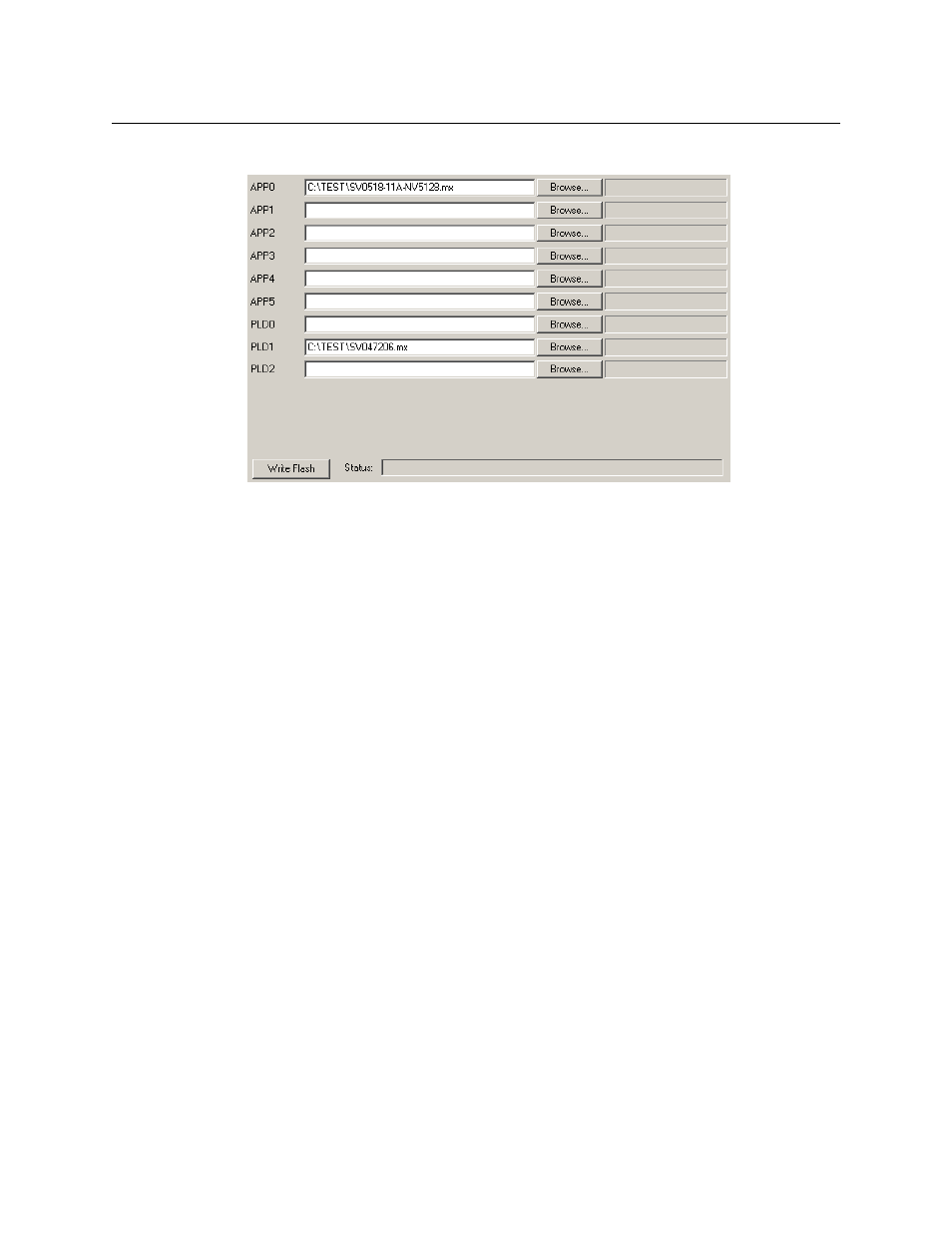Using flash configuration files – Grass Valley UniConfi NVISION Series v.2.1 User Manual
Page 131

119
UniConfig
User’s Guide
5 From the ‘Window’ menu, choose ‘Flash Memory’. The ‘Flash Memory’ window appears:
6 In the row corresponding to the firmware file you want to replace, (e.g., ‘APP0’), click Browse
and navigate to the location in your PC’s file system of the new firmware file. Click Open.
The pathname of the firmware file appears in the row of the ‘Flash Memory’ window.
7 Repeat step 6 for additional firmware files that you want to update.
8 Click Write Flash. The ‘Status’ bar at the bottom of the window indicates the progress of the
upload.
9 Again, from the ‘Window’ menu, choose ‘Configuration’. The ‘Software Versions’ section of
the window lists the new firmware.
10 Repeat steps 1–9 for each control card being updated.
Using Flash Configuration Files
The ‘Flash Window’ offers you a shortcut. You can save the names of the firmware files you use in
a file. Then you can load the names back into the flash window rather than entering the file
names by hand. This can save time if you have multiple control cards to configure.
The file extension for the name list is .flashcfg and the files are called flash configuration files.
To Save a Flash Configuration File
1 Populate the ‘Flash Memory’ window with the firmware files you want to use.
2 From the ‘File’ menu, choose ‘Save As Flash Configuration File’ to save the firmware file
name(s) locally on your PC. A dialog appears in which you can browse to locate and name
the .flashcfg file.
To Read a Flash Configuration File
From the ‘File’ menu, choose ‘Read From Flash Configuration File’ to read the firmware file
name(s) from the file on your PC. A dialog appears in which you can browse to locate the
.flashcfg file.
Reading the file restores the saved pathnames to the ‘Flash Memory’ page.
